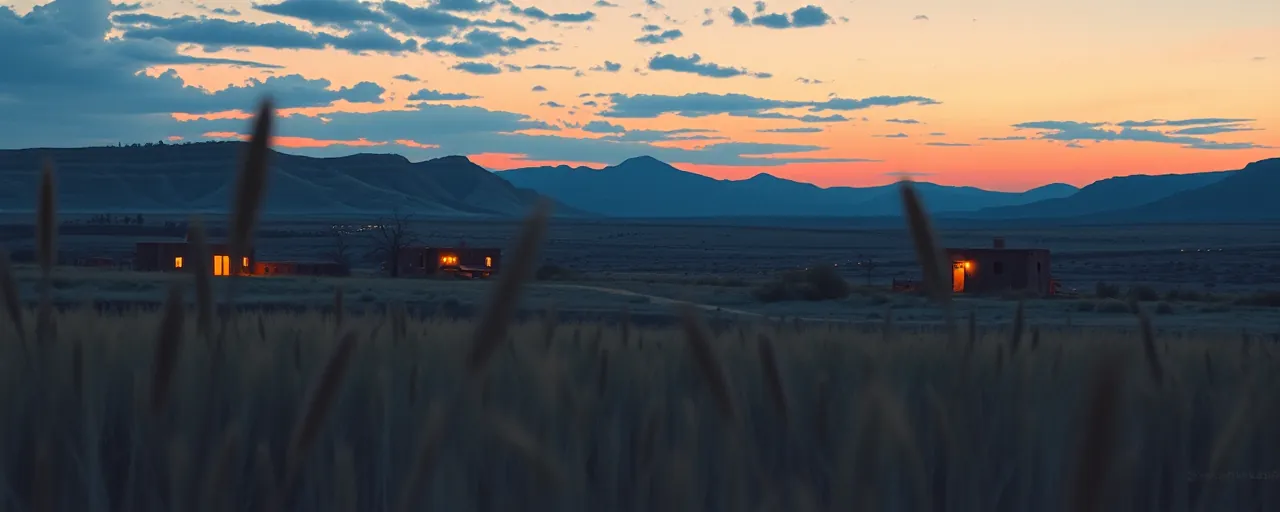A Night of Rage on Zuni Pueblo
A quiet September night in 2024 turned violent when Devin Wade Wyaco, a 34-year-old Zuni man, fired a handgun from his girlfriend’s car, striking a bicyclist in the abdomen. The victim, identified only as John Doe, survived after emergency treatment at Zuni Hospital and further care at the University of New Mexico Hospital. Court records paint a vivid picture: Wyaco, enraged by a rock thrown at the vehicle, pulled the trigger in a split-second decision that now carries lifelong consequences.
The incident, unfolding on the Zuni Pueblo in New Mexico, quickly drew federal attention. Wyaco, an enrolled tribal member with a prior felony record, pleaded guilty on April 3, 2025, to three charges, including assault with a dangerous weapon and illegal firearm possession. His case shines a spotlight on the tangled web of gun violence, tribal jurisdiction, and federal law enforcement that shapes life in Indian Country.
Unpacking the Charges
Wyaco’s guilty plea covers a trio of federal offenses tied to that September night. He admitted to shooting John Doe after the rock-throwing incident sparked his anger, a confession backed by his girlfriend’s statements and a search of her home, where authorities recovered the handgun. As a convicted felon, with past charges of cocaine distribution and fleeing police, Wyaco knew he was barred from possessing firearms under federal law. That violation alone carries steep penalties, compounded by the violent nature of the assault.
At sentencing, Wyaco faces a minimum of 10 years in prison, with the possibility of a life term, plus fines up to $250,000. The case, prosecuted by Assistant U.S. Attorney Zachary C. Jones, reflects a broader federal push to curb gun-related crimes. Acting U.S. Attorney Holland S. Kastrin and FBI Albuquerque Field Office Special Agent Raul Bujanda hailed the plea as a step toward justice, though it also raises questions about how such cases ripple through tight-knit tribal communities.
Violence Shadows Indigenous Lands
The shooting is no isolated event. Native American communities, including the Zuni Pueblo, grapple with violent crime rates far exceeding national averages. Homicide ranks among the top causes of death for Native women, and the FBI’s Indian Country program juggles over 4,300 active cases as of early 2025, from murders to domestic violence. Advocates point to systemic gaps, like understaffed tribal police and jurisdictional mazes, that leave many crimes unresolved.
Yet efforts to tackle this crisis are gaining ground. The FBI’s Operation Not Forgotten has resolved over 500 cases since its launch, pairing federal agents with tribal authorities. Still, voices from Indigenous communities argue for more than temporary fixes, pressing for sustained funding and personnel to address root causes. Wyaco’s case, while a single thread, weaves into this larger tapestry of struggle and resilience.
Firearms, Felons, and New Mexico’s Hard Line
Federal law draws a firm line: felons like Wyaco lose their right to bear arms for life under Title 18 Section 922(g). Breaking that rule can mean a decade behind bars, with harsher terms if violence enters the equation. New Mexico, facing a 96% surge in homicides over the past decade, has doubled down with its own laws. Senate Bill 253, passed in 2025, sets a nine-year minimum for felons caught with guns, and twelve for those with violent histories, aligning state penalties with federal heft.
Gun violence scars the state deeply. In 2023, New Mexico logged 530 firearm deaths, a rate 84% above the national norm, with homicides and suicides driving the toll. Children and teens bear an outsized burden, with guns now their leading cause of death. Wyaco’s prior convictions and his choice to arm himself spotlight the challenge of enforcing these laws in a state where firearms are woven into the fabric of daily life.
Tribal Police and Federal Partners
The Zuni Police Department teamed up with the FBI’s Gallup Resident Agency to crack this case, a partnership rooted in long-standing agreements between tribal and federal forces. Under laws like the Major Crimes Act, serious offenses on tribal land often fall to federal jurisdiction, with tribal officers playing a vital role in gathering evidence and navigating local dynamics. Training at places like the Indian Police Academy in Artesia equips them for the task, blending trauma-informed tactics with cultural know-how.
Collaboration isn’t flawless. Tribal police often stretch thin across vast territories, and historical underfunding has strained their reach. When federal agencies step in, tensions can flare over sovereignty and priorities. Wyaco’s swift identification and arrest show the system at work, but they also hint at the delicate balance between local trust and outside authority.
A Community Left to Reflect
Wyaco’s guilty plea closes one chapter but leaves plenty unwritten. For the Zuni Pueblo, the incident stirs up familiar pain, a reminder of the violence that too often strikes close to home. His sentencing, still ahead, will test how justice weighs a moment of fury against a lifetime of consequences. Beyond the courtroom, the case echoes louder debates about safety, accountability, and healing in Indigenous spaces.
New Mexico, meanwhile, wrestles with its own demons. Gun buybacks and mental health programs signal hope, yet the numbers—rising deaths, youth at risk—demand more. Wyaco’s story, raw and real, lands at the crossroads of personal choice and systemic forces, leaving readers to ponder what it takes to break the cycle.
